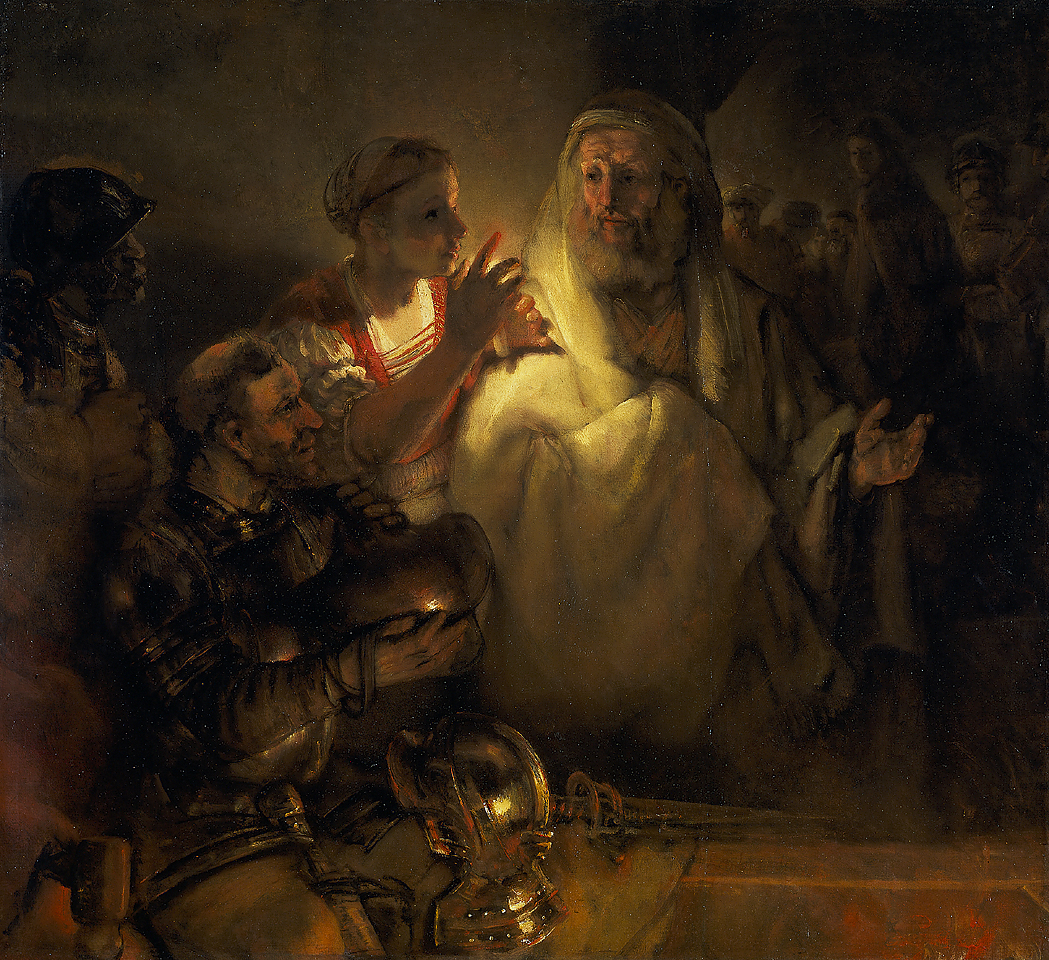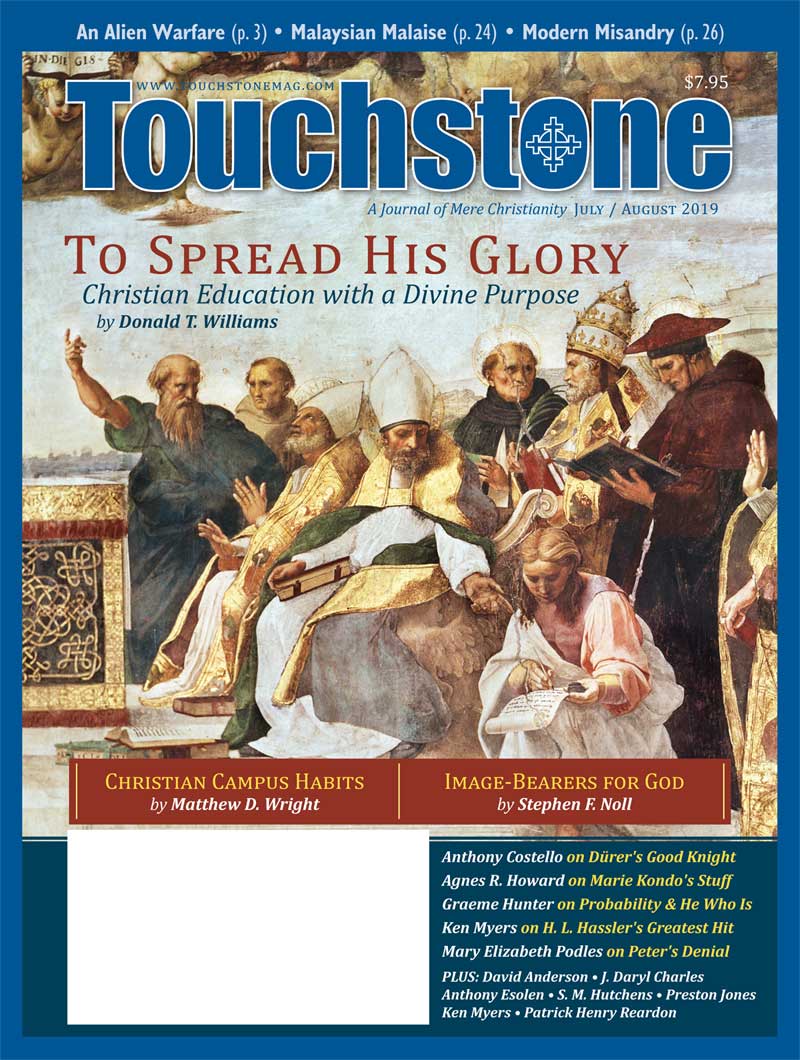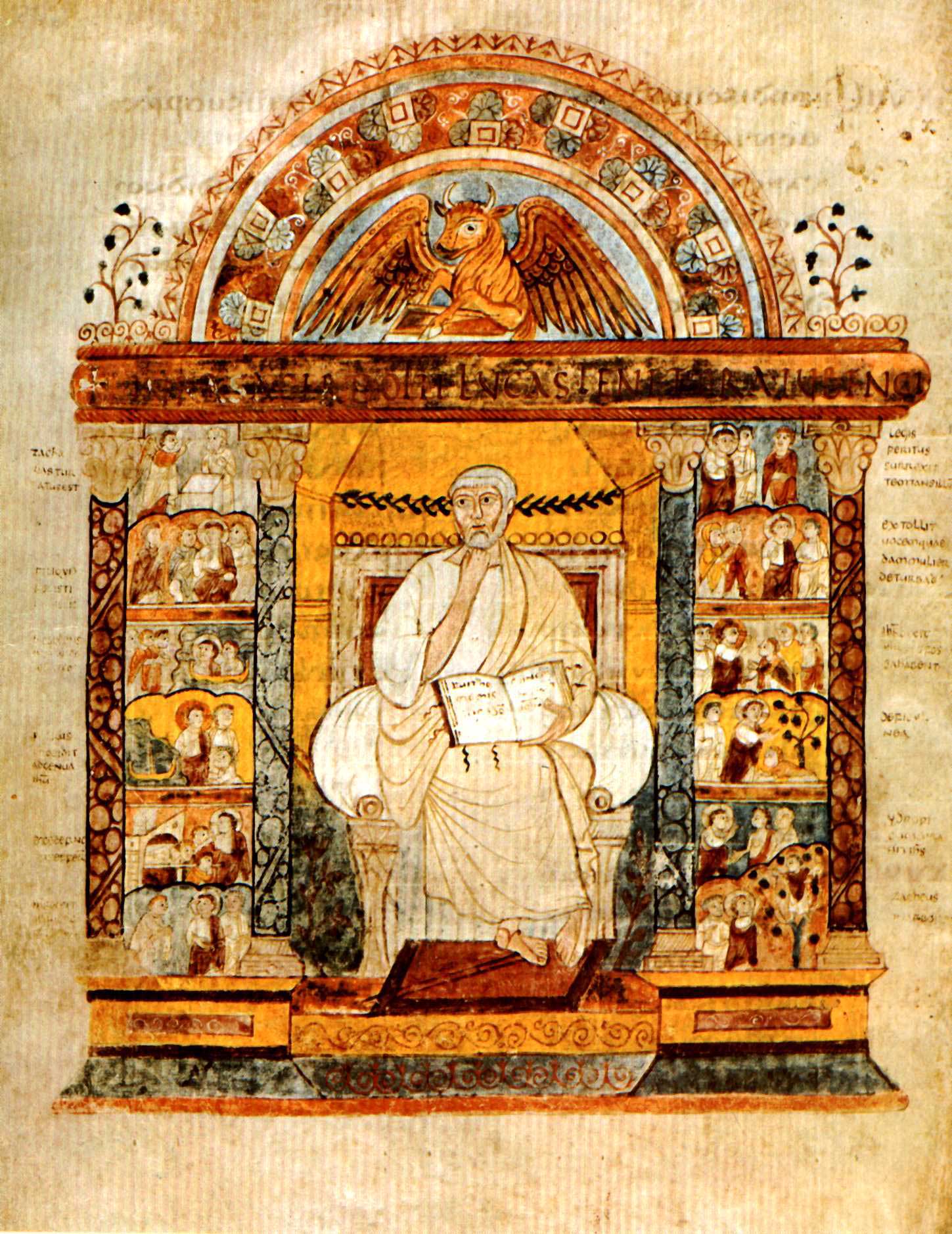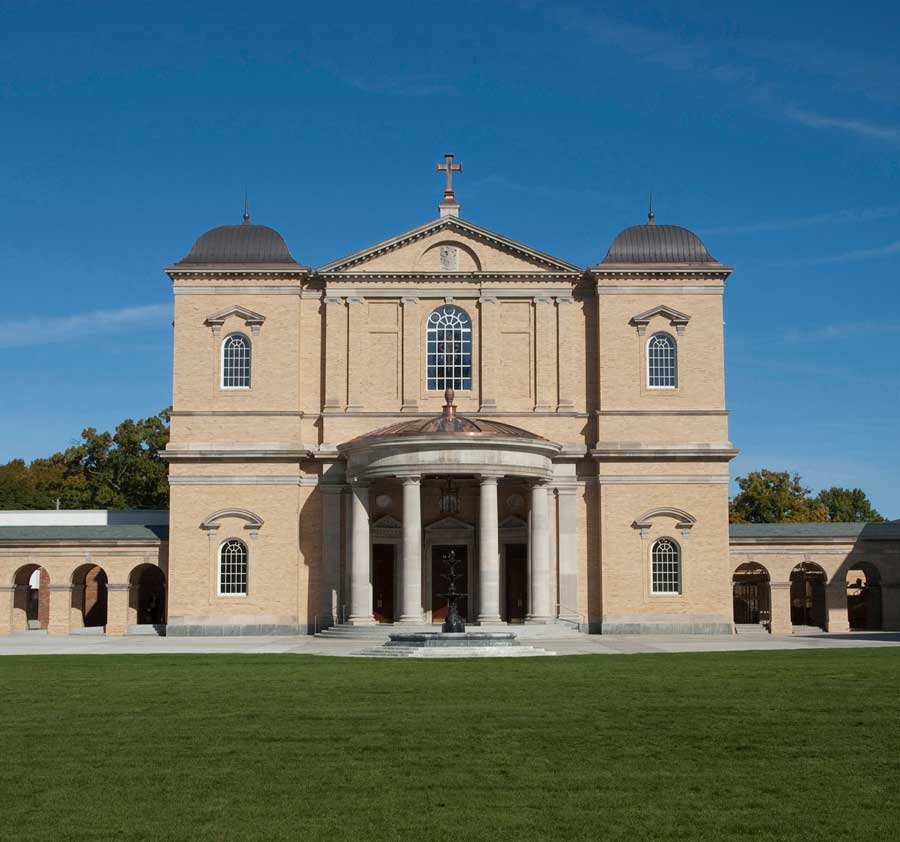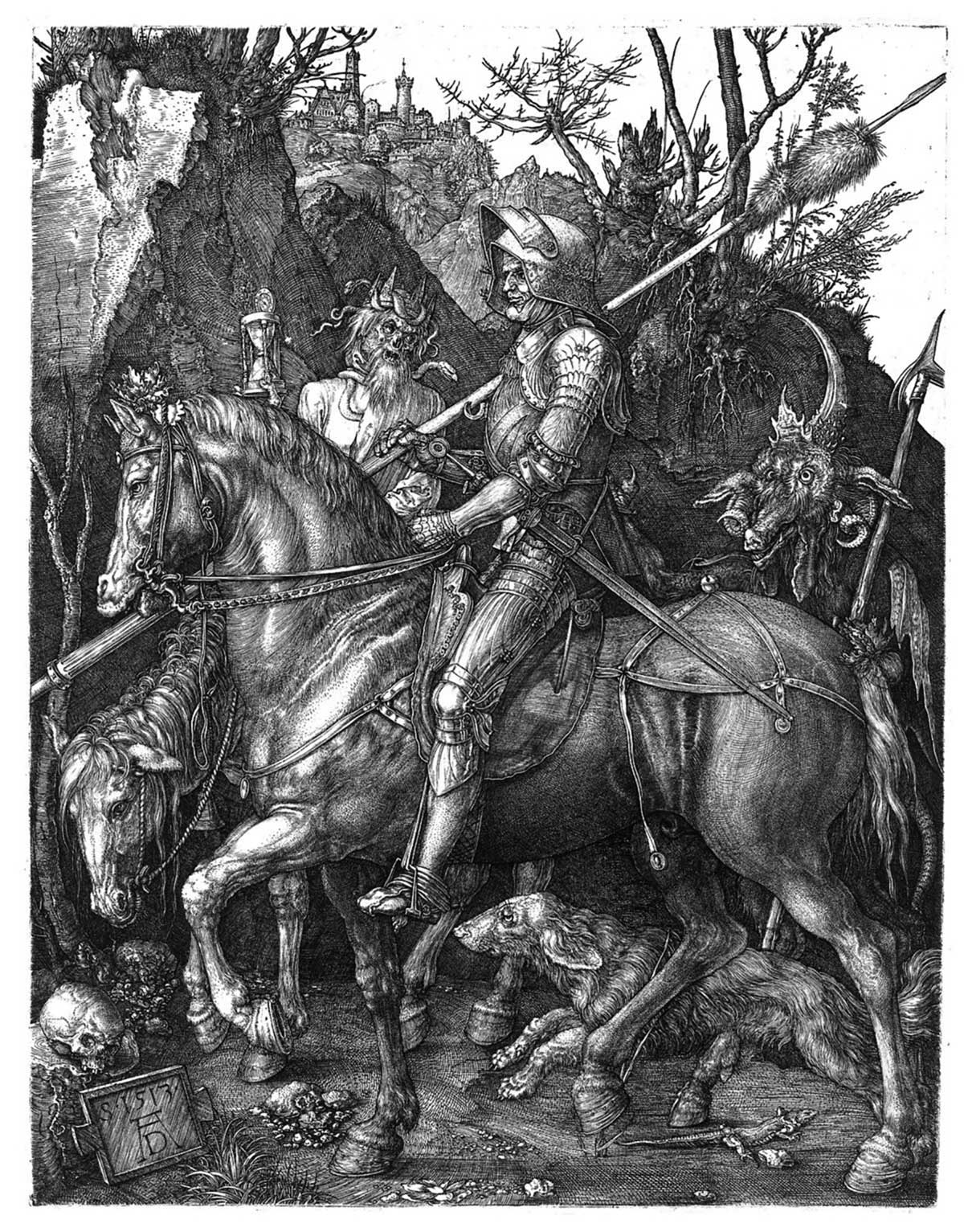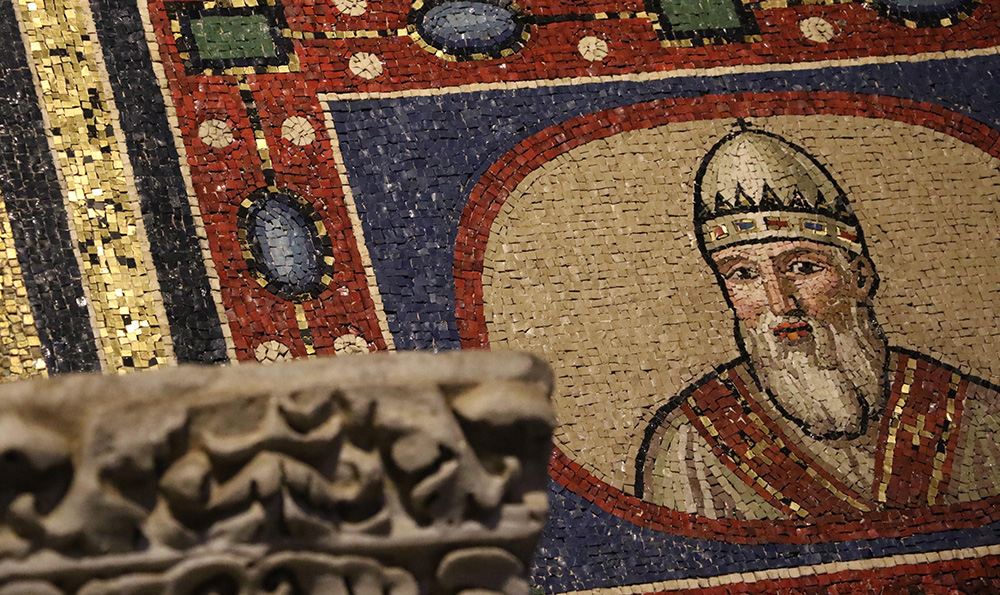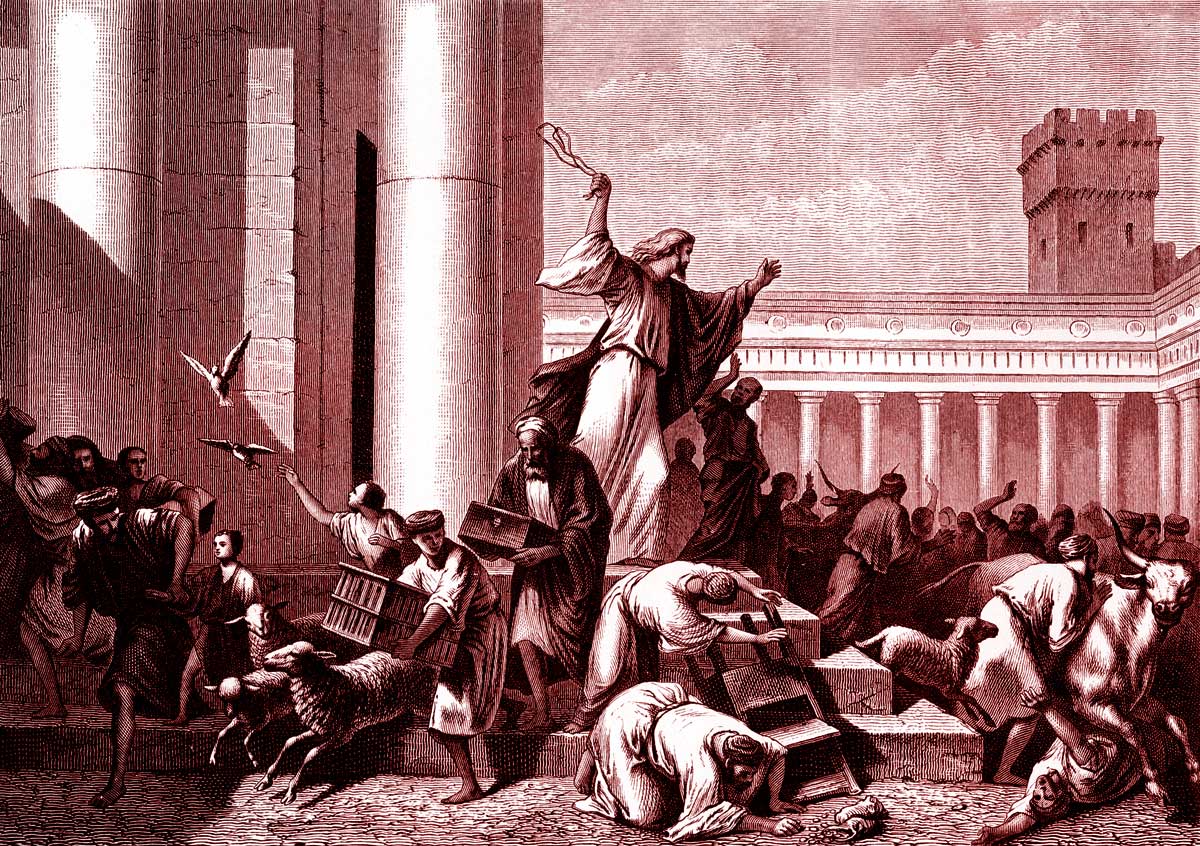A Thousand Words
Rembrandt's
The Denial of Peter
Rembrandt’s world, the Holland of the seventeenth century, has been described as “a rich stew of religious denominations,” predominantly Calvinist, but flavored with Lutherans, Remonstrants, Anabaptists, Collegiants, Quakers, and a seasoning of Catholics and Jews. Religious controversies were the hot topics of the day. Yet for all that, religious painting in the Netherlands languished. Calvin considered that painting was suitable only to render an account of the visible world, useful for the decoration of private spaces or civic buildings, but that any figural representation of the divine diminished or degraded it, and was therefore unsuitable. Calvinist churches were stripped of all decoration, especially of paintings, and the market for religious imagery dwindled. Most painters became specialists, painting landscapes, still lifes, portraits, or scenes from everyday life, while painters of scenes from history, mythology, and the Bible shrank their pictures to a scale suited to the domestic interior.
With one notable exception. Throughout his long career, Rembrandt occupied himself with religious and biblical topics far more than with any other subject, and he painted them on an increasingly grand scale. The Denial of St. Peter (1659, now in Amsterdam’s Rijksmuseum), which measures nearly five by six feet, is a case in point. We do not know whether it was painted on commission (perhaps for a wealthy patron), on speculation, or purely to satisfy the artist’s own imagination; Rembrandt was never a very practical soul, and by the time this was painted, he had already undergone bankruptcy proceedings and the sale of his grand house and collection. Still, the painting dates from a period of relative tranquility, when he might have felt free to explore topics of personal interest.
THIS ARTICLE ONLY AVAILABLE TO SUBSCRIBERS.
FOR QUICK ACCESS:
Mary Elizabeth Podles is the retired curator of Renaissance and Baroque art at the Walters Art Museum in Baltimore, Maryland. She is the author of A Thousand Words: Reflections on Art and Christianity (St. James Press, 2023). She and her husband Leon, a Touchstone senior editor, have six children and live in Baltimore, Maryland. She is a contributing editor for Touchstone.
subscription options
Order
Print/Online Subscription

Get six issues (one year) of Touchstone PLUS full online access including pdf downloads for only $39.95. That's only $3.34 per month!
Order
Online Only
Subscription

Get a one-year full-access subscription to the Touchstone online archives for only $19.95. That's only $1.66 per month!
bulk subscriptions
Order Touchstone subscriptions in bulk and save $10 per sub! Each subscription includes 6 issues of Touchstone plus full online access to touchstonemag.com—including archives, videos, and pdf downloads of recent issues for only $29.95 each! Great for churches or study groups.
Transactions will be processed on a secure server.
more on art from the online archives
more from the online archives
calling all readers
Please Donate
"There are magazines worth reading but few worth saving . . . Touchstone is just such a magazine."
—Alice von Hildebrand
"Here we do not concede one square millimeter of territory to falsehood, folly, contemporary sentimentality, or fashion. We speak the truth, and let God be our judge. . . . Touchstone is the one committedly Christian conservative journal."
—Anthony Esolen, Touchstone senior editor





